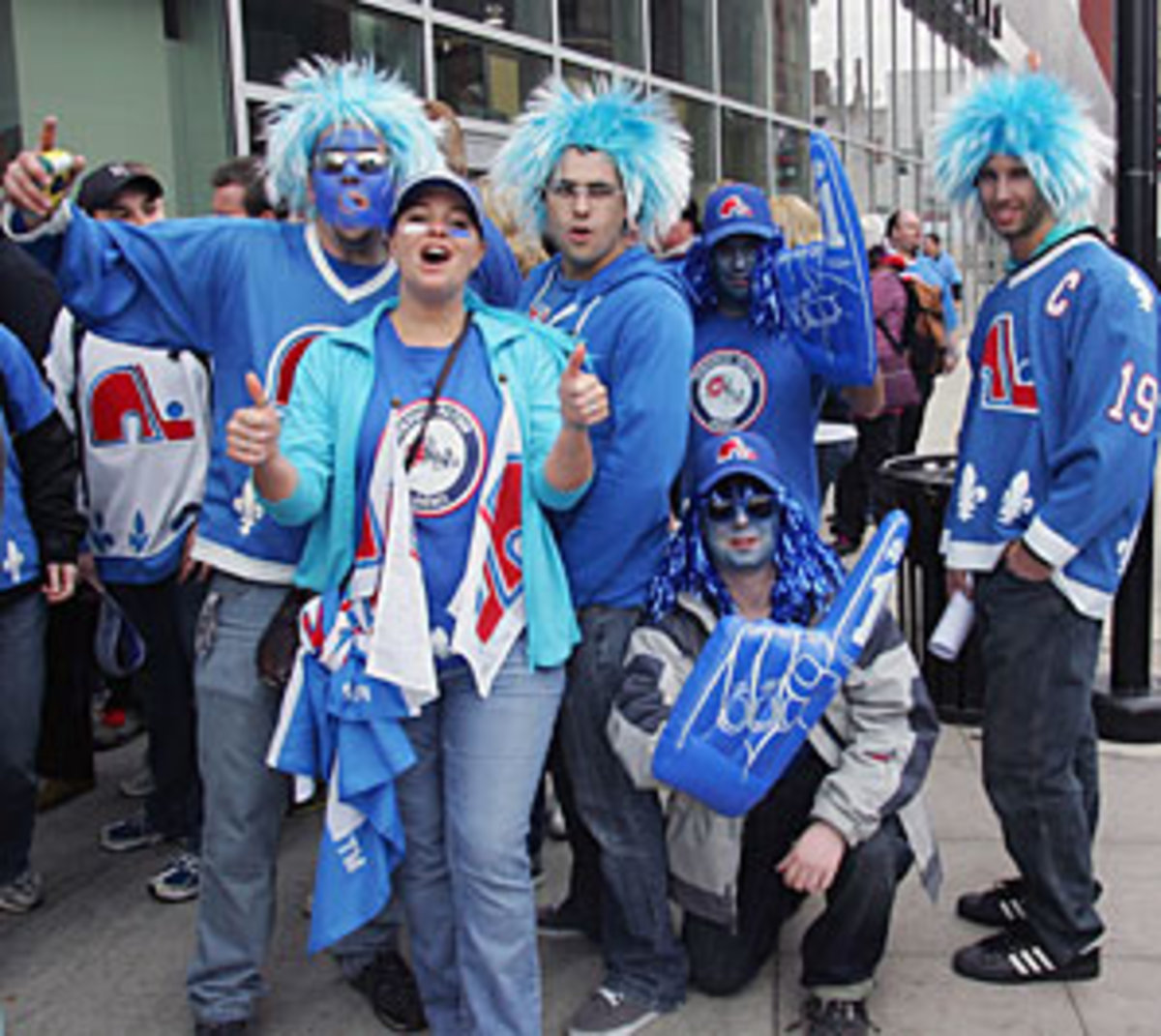
New NHL CBA could cost the Stars; more notes from the hockey world
No matter where you live, it seems that fear is the prime needle-mover in politics these days.
In America, nothing sells a message like the threat of Soviet-style socialism or regressive economic and social policies.
In Canada, it's the potential loss of hockey.
Jean Charest, the leader of Quebec's ruling Liberal party, tried to create some traction with the province's splintered electorate last week by suggesting a vote for the Parti Quebecois would doom efforts to land an NHL franchise for Quebec City. Spurred on by a reporter's question -- and far be it for this corner to suggest that it was a plant -- Charest announced that a vote for the pro-separatist opposition would trigger a chain of events and turn the province into an economic wasteland that the NHLwould find even less appealing than...Sacre bleu!...Phoenix.
"Why take the chance?" Charest asked the crowd amidst dire predictions of falling employment and negative growth. "If I was in Mr. Bettman's shoes, full employment means people have the money to watch hockey games. The other choice means five years of economic disruption."
Although Charest's party can't promise the return of the Nordiques, he has committed the provincial government to contributing half of a new arena project's $400 million cost, a pledge he'll continue to extol to fans who are longing for the return of the NHL -- and maybe, the NHL's greatest rivalry -- down the election's home stretch.
Despite the threat of a Mad Max-like dystopia on the horizon, groundbreaking on the arena went ahead as scheduled today with Nordiques legends Peter Stastny and Michel Goulet handling the ceremonial shovels nearly as deftly as their old Victoriavilles. The project is scheduled to be completed in September 2015.
If you'd rather skip the politics and simply follow the building process online -- an experience that lacks the self-deprecating wink of the Maple Leafs' paint-drying web-cam offer from last week -- you can check it out here.
You have to wonder if the Dallas Stars might end up paying more -- a lot more -- for the services of RFA Jamie Benn now that the league has laid its CBA cards on the table.
The sense around Dallas was that the Stars were hoping to sign Benn to a "bridge" contract -- essentially, an intermediate deal between his bargain-basement entry-level deal and striking it rich. It's an approach that paid off in the past when they inked Loui Eriksson and James Neal to two-year pacts that gave the players sizable raises, but didn't break the team's limited budget, either.
But in the wake of more sizable contracts being given to Edmonton's Taylor Hall and Jordan Eberle, Benn and his agent Rich Evans have more ammunition to demand a deal with longer term and a higher average annual value -- perhaps greater than the six years at $6 million per given to Hall.
Here's the twist: now that it's known that the league wants a CBA that won't honor the full value of previously signed deals, there's no reason for Benn to sign any time soon unless he's given an even higher AAV to protect him when escrow claws back 15-20 percent of every deal. Or he could threaten to hold out when play resumes, knowing that a team struggling to regain its footing in the Dallas market can't afford the negative optics of starting a delayed season with its franchise player on the sidelines.
Either way, Benn is likely to end up with a deal far richer than Eriksson and Neal...and maybe even more lucrative than those given Edmonton's young stars.
There's been no serious talk of rule changes that might follow in the wake of a new CBA, but you can bet there'll be some tinkering. Hopefully the league will look to the CHL, and not Sweden, for inspiration.
The QMJHL announced back in June that it would abolish the trapezoid for 2012-13 and it appears it might be out in the OHL as well. (A league official didn't return a call for comment on Friday, but the trapezoid markings were noticeably absent at several exhibition games over the weekend.) The rule has been an unmitigated failure in the NHL, leading to a diminished skill and an increase in injuries to defenders who are forced to head at breakneck speed to the end boards absent the safety valve of a puck-handling goaltender.
Usually the junior leagues follow the NHL's lead. Give them credit for setting the pace, rather than waiting around until the big boys finally figure out what a loser this concept was.
While there's a chance the NHL will smarten up on that rule, it probably won't be following the decision of the Swedish Elitserien to allow a puck kicked into the net to stand as a goal.
The caveat: the player's foot cannot leave the ice during the kicking motion.
In theory, it makes it easier for the officials to determine a good goal. Let's face it: determining what is or isn't a kicking motion has never been an exact science. But this is some Faustian bargain. In exchange for removing one problem, you've created another, more dangerous one. Now that the skate is a legal option, players will begin using them as an option for redirecting the puck when their stick is tied up. And despite their best intentions to keep them on the ice, it is inevitable that blades will come up harder and faster than ever.
Now imagine you're a goalie trying to cover up a rebound, or you're a player knocked down in the crease during a scrum...
You can hope otherwise, but you know something bad is going to come of this. If we're lucky, it'll only be a close call.




